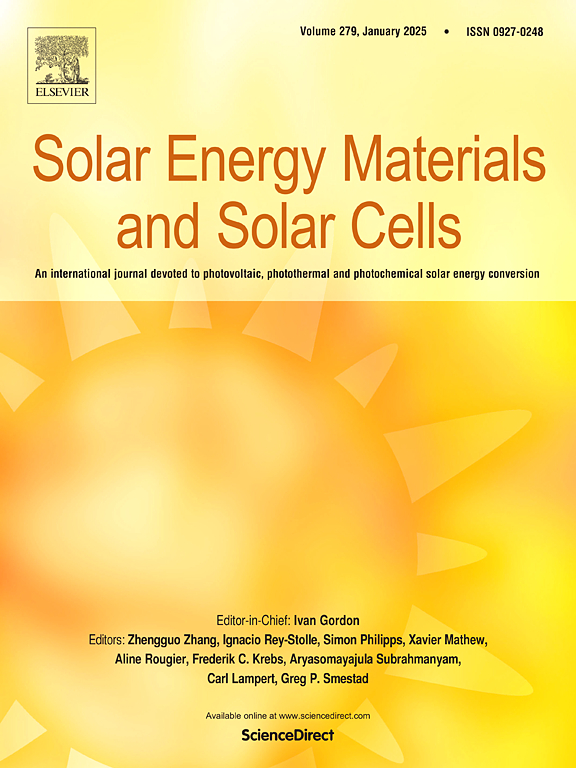Scalable horizontal-dipping electrodeposition of platinum nanoparticles for dye-sensitized solar cells
IF 6.3
2区 材料科学
Q2 ENERGY & FUELS
引用次数: 0
Abstract
Up-scaling remains a great opportunity to achieve in the third generation of solar cells. This article describes a novel method that combines electrodeposition with the roll-to-roll technique, which may be useful in the current mass production of dye-sensitized solar cells. The results show that large areas of conductive substrates can easily be covered with catalytically active platinum nanoparticles using a small amount of aqueous solution of the platinum precursor salt sliding over a substrate. The surface coverage is controlled by the applied current density, which directly impacts the catalytic properties of the substrate. Electrodeposition proves to be a cost-effective, eco-friendly, and time-saving alternative compared to commonly used screen-printing methods. Additionally, the electrodeposited nanoparticles exhibit even higher electrocatalytic performance in cyclic voltammetry measurements. Dye-sensitized solar cells utilizing cathodes with platinum nanoparticles prepared with different deposition currents demonstrate efficiency in the range of 4.84–5.45 %, while referential cells with screen-printed electrodes achieve an average efficiency of 5.14 %.

用于染料敏化太阳能电池的铂纳米颗粒的可扩展水平浸渍电沉积
扩大规模仍然是实现第三代太阳能电池的一个很好的机会。本文描述了一种将电沉积与卷对卷技术相结合的新方法,该方法在当前染料敏化太阳能电池的大规模生产中可能是有用的。结果表明,利用少量铂前驱盐水溶液在导电衬底上滑动,可以很容易地在大面积导电衬底上覆盖具有催化活性的铂纳米颗粒。表面覆盖由施加的电流密度控制,它直接影响基板的催化性能。与常用的丝网印刷方法相比,电沉积被证明是一种具有成本效益,环保和节省时间的替代方法。此外,电沉积纳米颗粒在循环伏安测量中表现出更高的电催化性能。利用不同沉积电流制备的铂纳米颗粒阴极的染料敏化太阳能电池的效率在4.84 - 5.45%之间,而采用丝网印刷电极的参比电池的平均效率为5.14%。
本文章由计算机程序翻译,如有差异,请以英文原文为准。
求助全文
约1分钟内获得全文
求助全文
来源期刊

Solar Energy Materials and Solar Cells
工程技术-材料科学:综合
CiteScore
12.60
自引率
11.60%
发文量
513
审稿时长
47 days
期刊介绍:
Solar Energy Materials & Solar Cells is intended as a vehicle for the dissemination of research results on materials science and technology related to photovoltaic, photothermal and photoelectrochemical solar energy conversion. Materials science is taken in the broadest possible sense and encompasses physics, chemistry, optics, materials fabrication and analysis for all types of materials.
 求助内容:
求助内容: 应助结果提醒方式:
应助结果提醒方式:


